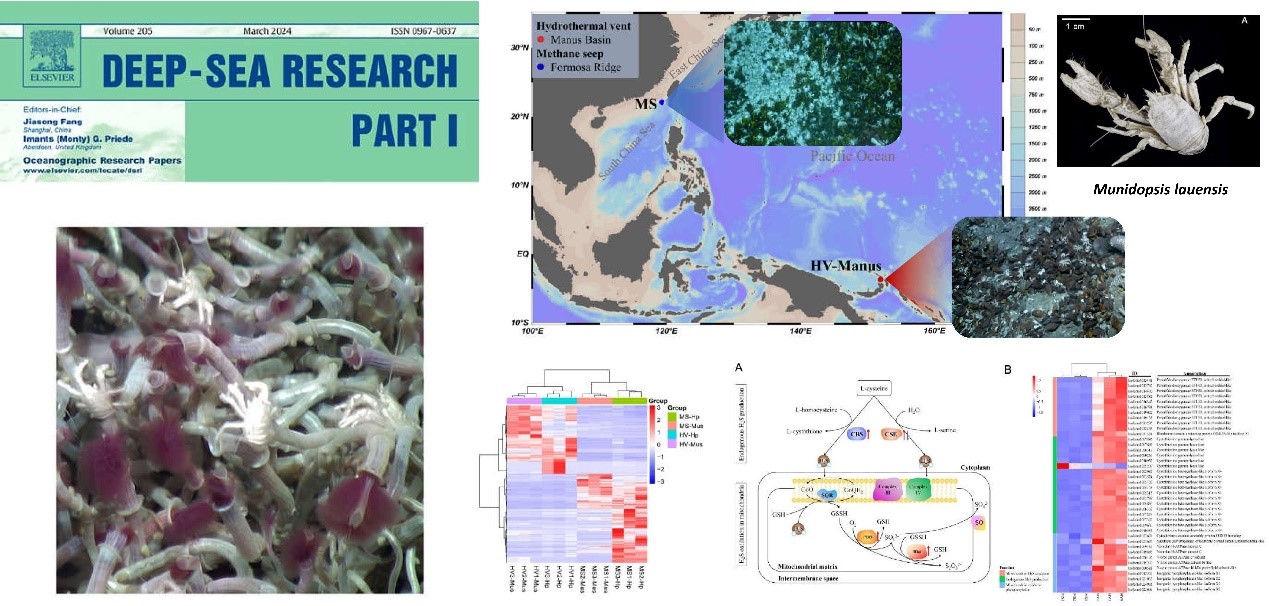海洋所在甲壳动物适应深海热液、冷泉环境分子机制方面获新进展
近日,海洋所沙忠利团队在甲壳动物适应深海热液、冷泉环境分子机制方面取得新进展,相关成果以封面文章发表于深海研究领域重要国际期刊Deep-Sea Research Part I。

图 劳盆拟刺铠虾Munidopsis lauensis分布于热液、冷泉不同深海化能环境(上)及调节关键环境适应性基因的表达模式以适应不同深海热液、冷泉环境(下)
这些结果揭示出劳盆拟刺铠虾可能通过调节环境适应性的关键基因表达模式以适应不同的深海化能环境,如不同的硫化氢、重金属浓度与微生物组成等。该研究与团队前期对柯氏潜铠虾的研究发现相互印证,共同揭示出环境适应关键基因的表达分化可能是甲壳动物适应不同深海热液、冷泉环境的重要策略,丰富了对深海大型生物环境适应机制的认识。
程娇副研究员和研究生闫晗为论文共同第一作者,沙忠利研究员为通讯作者。研究得到国家自然科学基金杰出青年项目、崂山实验室“十四五”重大项目和中国科学院战略性先导科技专项等项目联合资助。
相关论文信息:
1. Jiao Cheng#, Han Yan#, Min Hui, Zhongli Sha*. Novel insights into deep-sea hydrothermal vent and cold seep adaptation inferred from comparative transcriptome analysis of a munidopsid squat lobster distributed in both environments. Deep-sea Research Part I, 2024, 205: 104245. https://doi.org/10.1016/j.dsr.2024.104245
2. Jiao Cheng, Min Hui, Yulong Li, Zhongli Sha*. Genomic evidence of population genetic differentiation in deep-sea squat lobster Shinkaia crosnieri (Crustacea: Decapoda: Anomura) from Northwestern Pacific hydrothermal vent and cold seep. Deep-sea Research Part I, 2020, 156: 103188. https://doi.org/10.1016/j.dsr.2019.103188
3. Jiao Cheng, Min Hui, Zhongli Sha*. Transcriptomic analysis reveals insights into deep-sea adaptations of the dominant species, Shinkaia crosnieri (Crustacea: Decapoda: Anomura), inhabiting both hydrothermal vents and cold seeps. BMC Genomics, 2019, 20: 388. https://doi.org/10.1186/s12864-019-5753-7
附件下载:
 鲁公网安备37020202001323号
鲁公网安备37020202001323号 